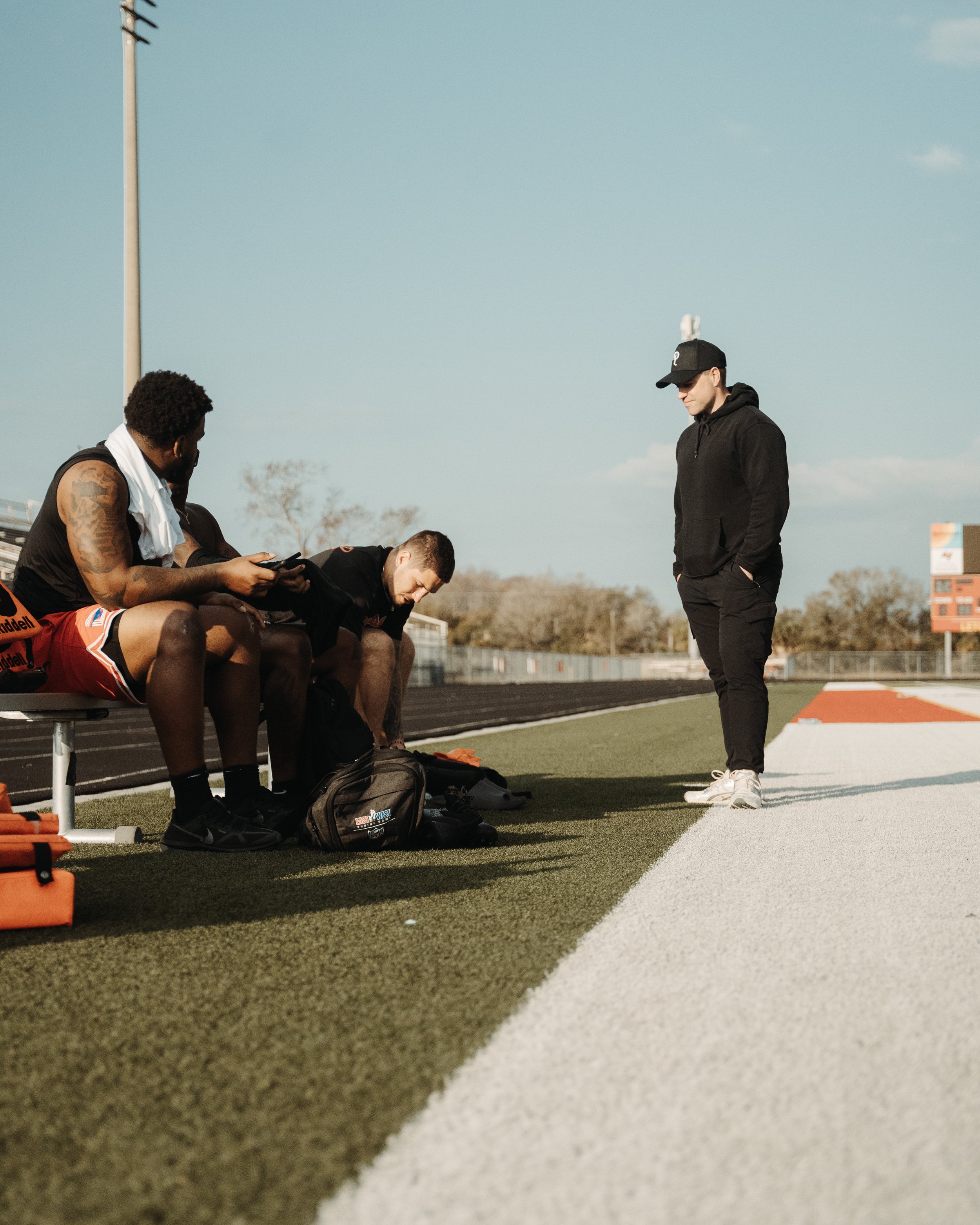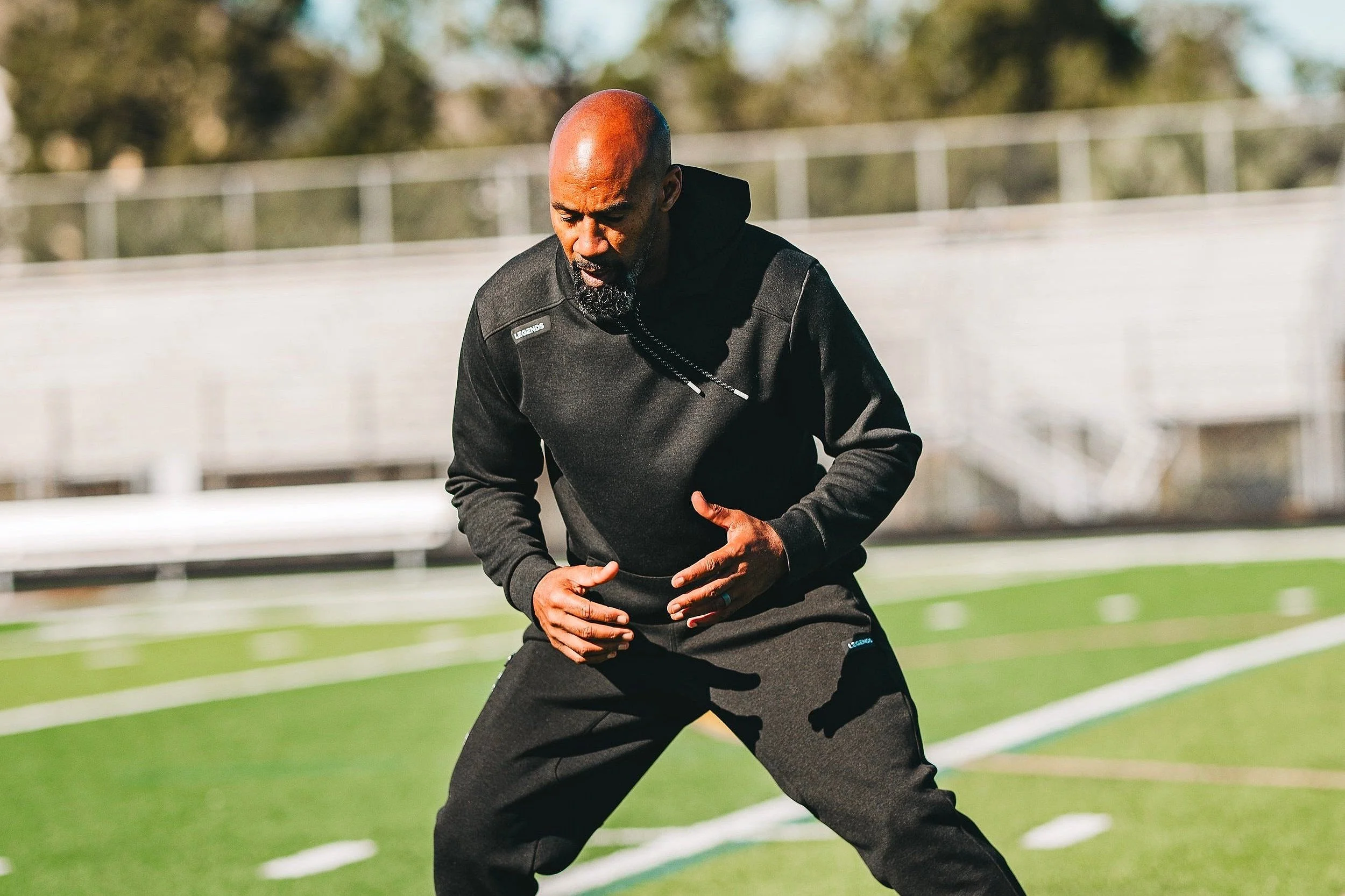
EXPERIENCE Speed
3 days. World-class experts. The blueprint for building faster, more resilient athletes.
Welcome to Camp
Knowing where to start someone on the journey for speed can be daunting; having the confidence to assess and progress athletes and clients quickly is the difference between good and great coaches.
This three-day immersive speed camp brought to you by YMP and Pre-Script is a world-class immersive speed training experience guaranteed to increase your confidence and your value as a coach.
A mix of hands-on application in the weight room and the track, coupled with the necessary theory in the classroom room will transform your coaching product in three days.
Unlock Performance Today
Each day will focus on a different component of speed development and take the students through a fully immersive experience, from the classroom to the weight room and the track. Each student will have the opportunity to coach and be coached through our 3-day curriculum. Under the watchful eye of the Pre-Script X YMP Staff.
Day 1
Focus: Acceleration
In order to go fast, you need to get off on the right foot. The acceleration phase is an integral component that often goes overlooked. This day will dissect how to assess your athletes competencies, and begin to write and implement exercise programing in the weight room as well as workouts for the track in a succinct, complimentary manner.
-
Lecture
The classroom session will examine the theoretical models of acceleration. Breaking down different acceleration strategies while teaching fundamental physics which will allow coaches to immediately identify technical errors and, more importantly, give them the tools to improve them.
This interactive classroom setting will give coaches the space to engage in discussion with the industry leaders in speed development. Helping you forgeWeight Room
Resistance training is an often overlooked process in the acceleration phase, but it can offer us unique opportunities to effectively teach the body positions necessary to be effective when we get to the track. Not only will the weight room session teach you how to execute movements that are consistent with teaching proper body mechanics for acceleration, but it will also teach you how and when to apply these tools to solve specific problems with your athlete's mechanics. Tools such as resisted sprinting, sled work, med balls and more can all be harnessed to better your athlete's acceleration posture and build transferable skills that they can take to the track.
The Track
This is where the students will not only be able to apply what they've learned in the classroom and the weight room, but they'll be able to see and feel it. Getting put through the paces of Track-specific acceleration drills from the point of both the coach and the athlete.
Learning how and when to apply tools like bounding, chains, resisted sprints, and more.
Crafting your coach's eye to develop the acceleration phase, and deploy the necessary drills and cues to help make corrections in real time.
Day 2
Focus: Deceleration / Change of Direction
Speed isn’t just about moving forward; it’s about how quickly you can slow down, stabilize, and redirect force. Deceleration and change of direction are essential yet often overlooked skills that separate good from great athletes. On Day 2, you’ll learn how to assess, train, and coach these multidirectional abilities, building more adaptable and resilient performers.
-
Lecture
Deceleration and change of direction are two key elements of sport-specific speed development. This lecture will highlight the correlations and discrepancies between linear speed and game speed.
Weight Room
Deceleration and change of direction require a unique set of forces and joint angles. Our day 2 weight room session is dedicated to learning the assessment tools to necessary to identify an athlete's ability to attain and maintain these positions.
They will also learn how to select, implement and execute an expansive toolbox of exercises that are meant to further an athlete's ability. Coaches will be getting hands-on in both performing and coaching these movements: learning, first hand, the multiplanar demands of change of direction and deceleration.The Field
Translating, decelerating and change direction takes a perfect pairing of stiffness and fluidity. Training these properties in tandem on the field takes very specific execution with very specific intent.
Coaches will practice performing and coaching multi-directional plyometrics, reactive change of direction drills, overspeed deceleration drills and more. Sharpening their coach's eye to these very specific skills
Day 3
Daily Focus: Max Velocity
Max velocity is where athletic potential meets its true test. It’s not just about hitting top speed; it’s about sustaining it with efficiency, resilience, and precision. Day 3 will show you how to build, cue, and protect this critical phase of speed development, so you can confidently guide your athletes to run faster for longer, without compromise.
-
Lecture
The classroom session will examine the theoretical models of acceleration. Breaking down different acceleration strategies while teaching fundamental physics which will allow coaches to immediately identify technical errors and, more importantly, give them the tools to improve them.
This interactive classroom setting will give coaches the space to engage in discussion with the industry leaders in speed development. Helping you forgeWeight Room
Resistance training is an often overlooked process in the acceleration phase, but it can offer us unique opportunities to effectively teach the body positions necessary to be effective when we get to the track. Not only will the weight room session teach you how to execute movements that are consistent with teaching proper body mechanics for acceleration, but it will also teach you how and when to apply these tools to solve specific problems with your athlete's mechanics. Tools such as resisted sprinting, sled work, med balls and more can all be harnessed to better your athlete's acceleration posture and build transferable skills that they can take to the track.
The Track
This is where the students will not only be able to apply what they've learned in the classroom and the weight room, but they'll be able to see and feel it. Getting put through the paces of Track-specific acceleration drills from the point of both the coach and the athlete.
Learning how and when to apply tools like bounding, chains, resisted sprints, and more.
Crafting your coach's eye to develop the acceleration phase, and deploy the necessary drills and cues to help make corrections in real time.
Coaching Outcomes & Advantages
Gain a clear, practical framework to break down speed development into simple, measurable components so you can consistently drive real progress with every client and athlete you coach.
Build confidence in applying and scaling plyometric and sprint training principles from the general population to world-class athletes.
Approach to programming in and off-season, speed quickly and effectively
Develop a keen coach's eye to be able to introduce speed development into every population







